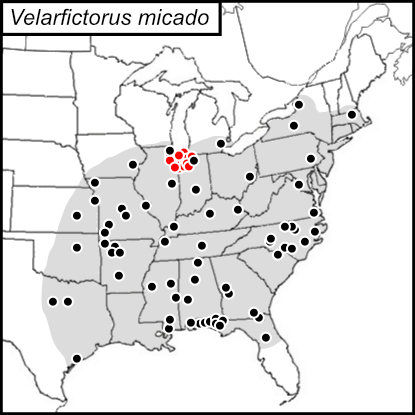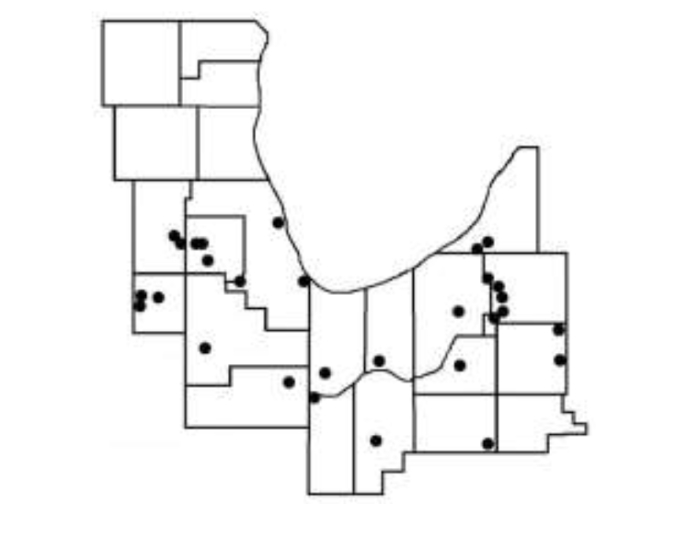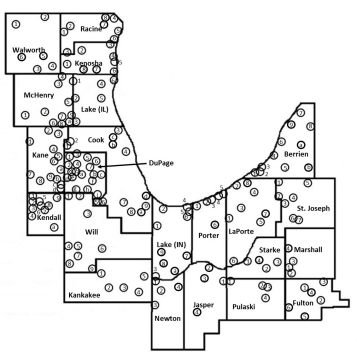



|
Except for the red dots, the map above is a standard SINA distribution map–i.e., each black dot is a county record for the species and the shaded area represents where the species is expected to occur. The red dots indicate county records based on Carl Strang’s annual surveys, started in 2013, of 22 counties clustered about the southern shores of Lake Michigan. As explained on a map history page, there are reasons records in these counties are of special interest.
| Special information about the northward spread of Japanese burrowing cricket | |

Map showing records for V. micado from Strang 2021, p. 23. 
Strang’s studies cover 22 counties near the southern shores of Lake Michigan (Strang 2021, Fig. 1, p.5). Study sites, indicated by open circles, are identified by numbers or letters within the circles and their locations within the county as given in the legend of Fig. 1. |
The map at left shows the distribution of V. micado within 22 counties near the southern end of Lake Michigan. Carl Strang (2020, 2021) has, since 2013, been monitoring annually the crickets and katydids occurring at multiple localities within each of these counties. As can be seen by the within-county black dots, Strang has found V. micado in 16 of the 22 counties he monitored, with the species occurring at 1 to 4 sites in the occupied counties.
On page 3 of Strang (2020) he states “Each year I add increasing numbers of site and county records for Japanese burrowing crickets, an Asian species that has spread from [Atlantic and Gulf] coastal introduction sites. New county records in 2020 were Cook, Kankakee, Porter, LaPorte, Marshall, Pulaski and Berrien Counties. I now have found them in every county except the Wisconsin ones [Walworth, Racine, and Kenosha], the two Illinois counties bordering Wisconsin [McHenry and Lake], and Fulton County. They likely are in Fulton (county in Indiana), but as it is the most remote county from my home I do not get there often. I expect to find them in Fulton’s largest city, Rochester, next year. So far I am finding them mainly in towns or along drainage ditches. Often they are associated with landscape or building materials, so some of their spread may be human-facilitated, but they also appear to be using the ditches as dispersal corridors." A reason that Strang’s studies deserve special treatment in SINA is that he is monitoring, at a very fine scale, the northward spread of both native and introduced species as the earth is slowly warming. |